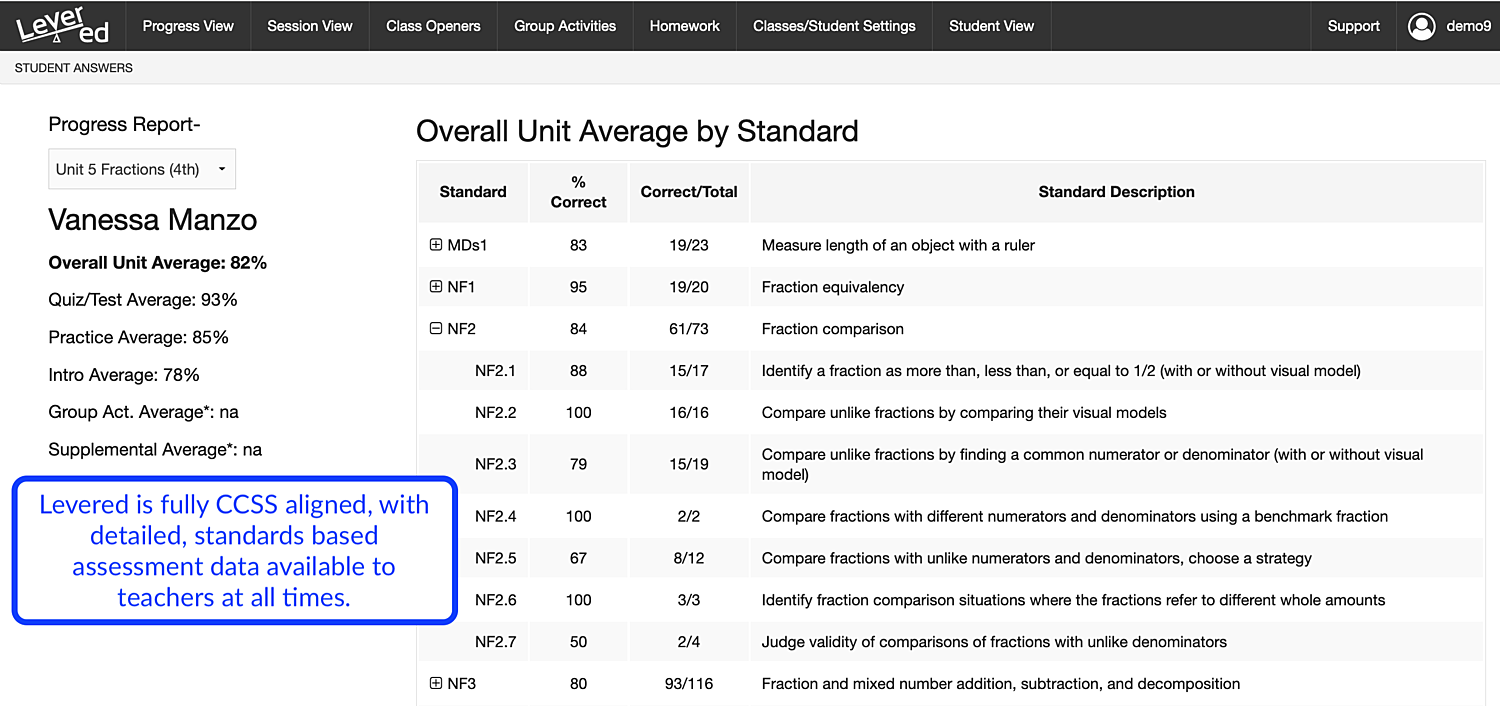Unpacking Distance Learning: A Levered Blog Series
July 26, 2020 | Found in: Distance learning

Delivering quality instruction from California guidelines, SB 98/AB 77
Summer is nearly over, and while many schools and districts have created systems to institute distance education, delivering “quality instruction” per state guidelines have left many with more questions than answers. In this series, we have asked guiding questions to unpack what “quality” means when there is still uncertainty surrounding how much distance learning or in-class instruction teachers will have to deliver. When schools moved to remote learning in the spring of 2020, Levered schools were able to seamlessly transition their core math curriculum to home use for their 3rd, 4th and 5th grade students.Teachers were excited to report student participation rates above 70%, with average engagement over 30 minutes per day through the end of the year.
We hope this series helps facilitate conversations about distance education at schools and districts while providing Levered educators support to help their students thrive during the 2020-21 school year.
Element of Quality from CA SB 98
CCSS Alignment (Ed. Code 43503(b))
While many Common Core-aligned curriculum products omit the applicable standards in lessons, we tag every Levered activity with the specific Common Core standard and sub-standard referenced. Without explicit access to the standard, educators have to undertake an immense amount of work in backward planning and communicating to their professional learning community (PLC). When assessing student work or in real-time teaching, without the standard in front of them, educators struggle to provide quality feedback. With more and more research about data-driven instruction and the impact of explicit learning, a teacher must have the standards mastered, despite too few spare minutes to navigate outside of the classroom.
Within Levered, standards are available in both deep dives into individual work or visible as a “pop-up” function to facilitate quality feedback where students are struggling at the moment. Teachers having immediate access to standards saves hours of work and allows for pinpoint intervention for student learning, and also helps provide qualitative and quantitative feedback to parents, PLC’s, and administrators on student course work progress and performance.


In-Person or Equivalent in Distance Learning (Ed. Code 43504)
Current blended learning models with a suite of supplemental programs are inadequate when moving from in-class to distance learning. Connecting student learning to their work and assessment requires an immense amount of a teacher’s time. At a distance, it isn’t easy to know what is happening for the learner in an adaptive product, assessments delivered solely at the beginning, mid-point, and end of the term eliminates the ability to compensate and provide meaningful intervention in a timely manner.
With Levered’s Learning Dashboard, educators have access, with a single click, to every student’s successes and challenges. With assessment happening every time the student is working on their individualized curriculum, teachers can make informed instructional decisions on how to deliver instruction for every student. The same data helps the teacher plan the next day’s focus for whole-class, 1-on-1 instruction, or small group interventions via video conferencing, with a virtual whiteboard and scaffolded teaching cues on example questions.
Levered is focused on student-centered learning with True CCSS aligned curriculum that is competency-based, providing intellectual challenge and productive struggle. Levered is equally obsessed with empowered instruction using a real-time view into student work, along with tools to ensure learning progression for every student, to provide the depth of in-person instruction, even from a distance.
Download our distance learning checklist for providing quality instruction according to California’s SB 98/AB 77 guidelines.
